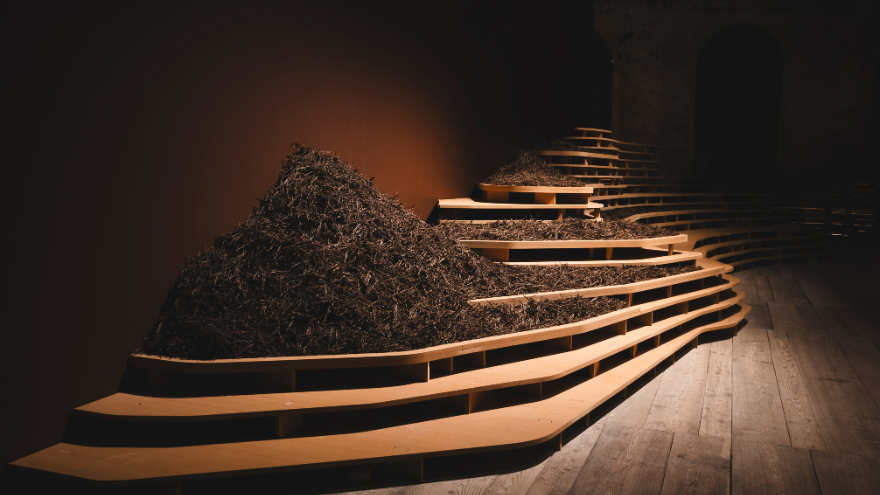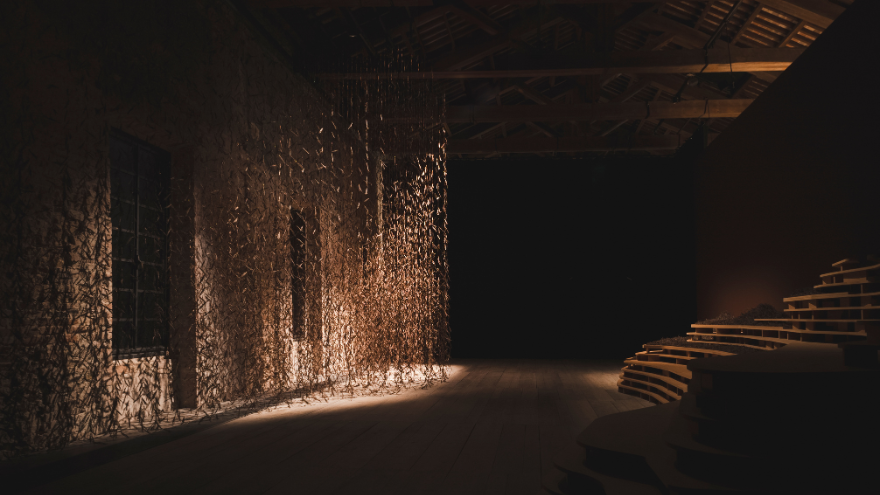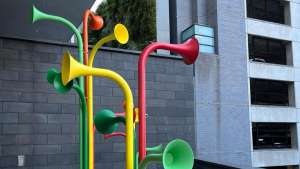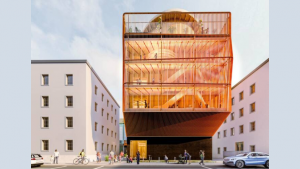Titled Quiet Ground, the South African pavilion at the 60th International Art Exhibition, La Biennale di Venezia, was unveiled on 20 April 2024 where it will remain until 24 November 2024. The exhibition was curated by Dr Portia Malatjie, Curator and Senior Lecturer in Art History and Discourse of Art at the Michaelis School of Fine Art, University of Cape Town, and features a newly-commissioned sound installation by Molemo Moiloa and Nare Mokgotho of art collective MADEYOULOOK.
Each year, nations from across the globe create pavilions as a form of national representation. This year, South Africa presents a meditation of the political, social, ontological and spiritual histories of land and water with a solo exhibition of MADEYOULOOK’s ‘Dinokana’ (2024).
‘Dinokana’ is the result of seven years of research in the northern part of South Africa, on histories of land work, traditional infrastructures of land repair, and their connections to repair of society more broadly. The central piece of the installation is an eight-channel sound composition that foregrounds the power and place of rain and water in traditional South African society. Working from an historical archive of songs of rain and harvest, the sound piece brings together field recordings of the natural landscape, interviews with generations of land workers, healers and family memories framed within the structure of a Johannesburg thunderstorm.
The soundscape is held within a constructed landscape that references the terraced hillsides of Bokoni and a rainscape made up of resurrection plant clippings – a plant used in African medicine and traditional cultures representing the potency of rain in repair and regeneration in Southern African life.
Set against the backdrop of histories of forced migration and land dispossession in South Africa, Quiet Ground is focused on the possibilities of personal and communal repair in a context of being ‘foreign at home’.
‘Rooted in the ongoing legacies of forced migration in South Africa, the exhibition focuses on how the dispossessed reconnect with the land and investigates cycles of loss and repair during multiple iterations of displacement,’ writes Malatjie in a curatorial statement. ‘In charting processes of rehoming and rehabilitation, the exhibition understands the relationship with the earth as a way of being. It advocates the subjectivity and agency of land, and explores land as method, epistemology, educator, repository of memory, archive and as a portal through which ancestral knowledge is communicated and transferred.’
The exhibition, and its parallel public programmes, will focus on the many ways the dispossessed reconnect with the land through these processes rooted in indigenous knowledge.
For more information, visit https://sapavilion.co.za/
READ MORE







